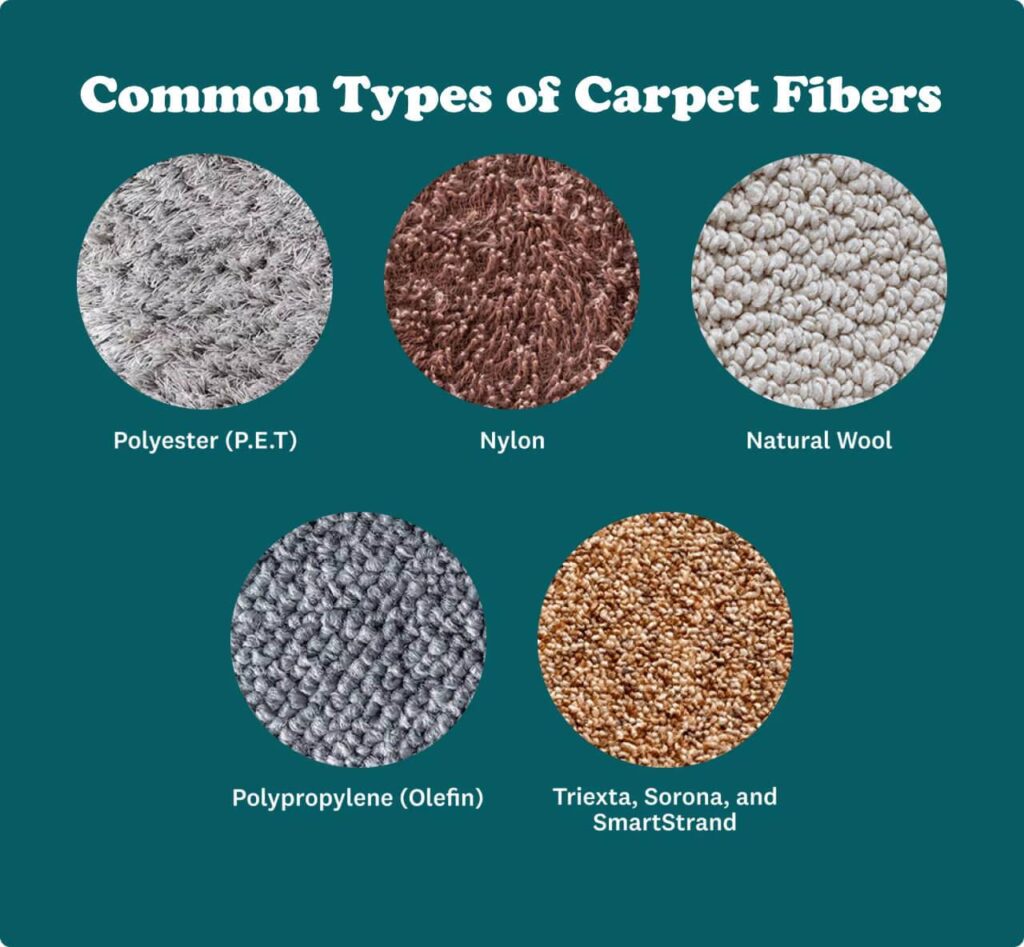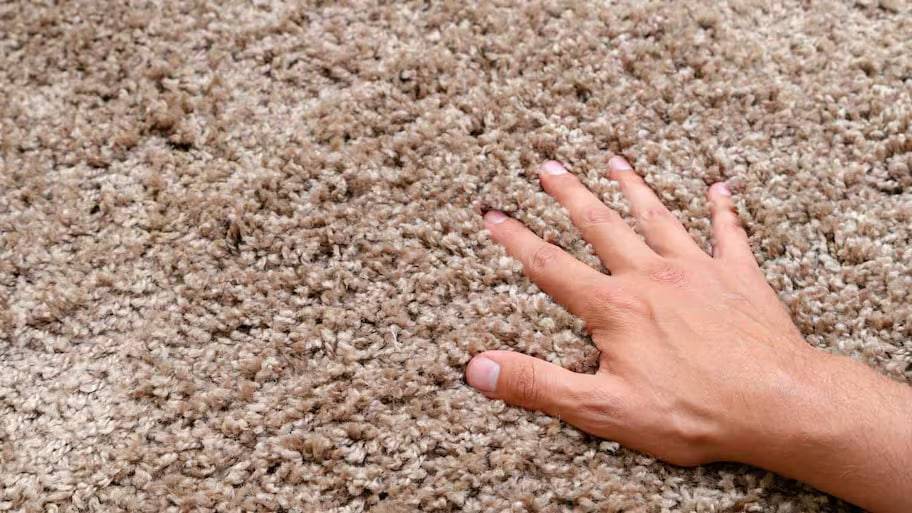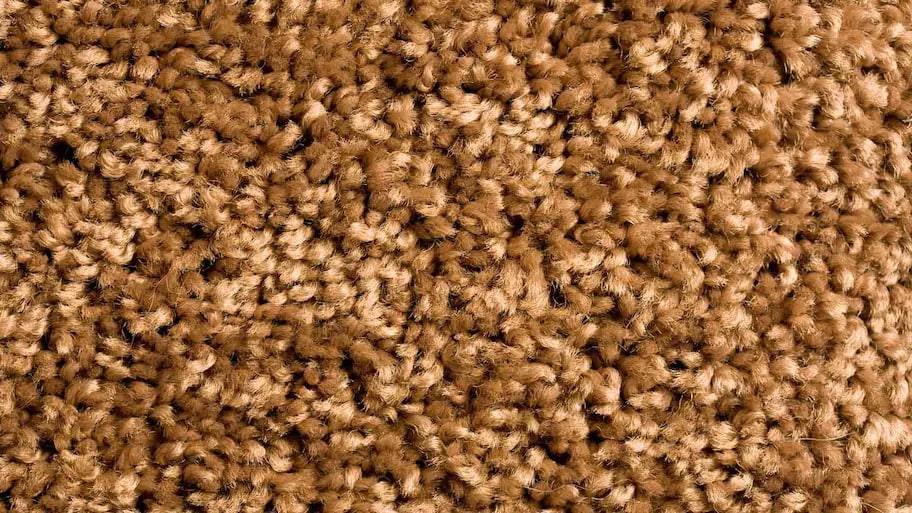Choosing the right carpet can feel overwhelming, but it all starts with the fiber! Different fibers offer unique advantages, from enduring high traffic in your living room to creating a plush haven in your bedroom. Let’s explore the most common carpet fibers to find the perfect match for your needs.
1. Polyester (PET) Carpet Fiber: Affordable Softness
Looking for a budget-friendly carpet with a luxurious feel? Polyester (PET) might be your pick. It’s generally less expensive than nylon or wool, making it a wallet-winner. Plus, polyester takes dyes beautifully, offering vibrant and fade-resistant colors. It also boasts decent stain resistance.
The downside? Frequent vacuuming is key to maintain its lifespan. While comfortable for bedrooms, polyester isn’t the most durable. It’s prone to matting and losing its pile height under furniture or in high-traffic areas like hallways and living rooms. This can make it show wear faster. So, while soft and affordable, polyester is best for low-traffic areas.
| Pros | Cons |
| Very affordable | Poor crush-resistance |
| Luxuriously soft | Not as durable as other fibers |
| Long-lasting | Can look more worn than other fibers |
| Eco-friendly, often made from recycled materials |
2. Nylon Carpet Fiber: The Durable All-Star
Looking for a carpet that tackles anything your family throws at it? Look no further than nylon! It’s the king of synthetic fibers for a reason.
Here’s what makes nylon amazing:
- Tough as nails: Resists spills, stains, insects, mold, mildew, and even abrasions. Perfect for high-traffic areas.
- Soft and Supportive: Feels great underfoot while maintaining its shape under heavy furniture.
- Long-lasting Love: A quality nylon carpet can last 12-15 years, adding warmth and comfort to your home.
Keep in mind:
- Cost: While more expensive than polyester, nylon’s durability justifies the price tag.
- Cleaning: Regular vacuuming and occasional spot cleaning are easy, but annual steam cleaning is recommended.
| Pros | Cons |
| Highly resistant to stains, damage, insects, mold, mildew | Requires annual steam cleaning |
| Well-suited for high-traffic areas | Not as eco-friendly as other options |
| Most durable synthetic option | Moderately high cost among synthetics |
| Very soft |
3. Wool Carpet Fiber: Luxury Underfoot
For centuries, wool has been the gold standard for carpets. Here’s what makes it special:
- Natural Beauty: Luxuriously soft and warm, wool offers a touch of elegance to any room.
- Durable and Resilient: Wool hides dirt well and bounces back from foot traffic, maintaining its shape for years.
- Naturally Stain-Resistant: Wool repels dirt and some spills, making it easier to keep clean.
Before You Fall in Love:
- Costly Investment: Wool is one of the most expensive carpet options.
- High-Maintenance: Wool requires specific cleaning methods and can’t be steam cleaned.
- Moisture Sensitive: Holds more moisture than synthetics, making it less ideal for humid environments.
- Allergy Concerns: Wool can trigger allergies for some people.
- Not Bug-Proof: Susceptible to moth damage.
| Pros | Cons |
| Warm and luxuriously soft | Among the most expensive carpet fibers |
| Naturally stain-resistant | Cannot be steam cleaned |
| Highly durable | Not hypoallergenic |
| Eco-friendly natural material | Susceptible to moth damage |
| Requires specific cleaning methods |
4. Polypropylene (Olefin) Carpet Fiber
Polypropylene (olefin) is a wallet-friendly alternative to wool, especially known for its resistance to water woes. Here’s what makes it stand out:
- Waterproofing Champion: Polypropylene repels spills and resists moisture, mold, and mildew.
- Stain Stopper: Solution-dyed fibers mean colors are built-in, making them bleach-proof and resistant to staining.
- Sun-loving Color: Fade-resistant, so your vibrant colors stay that way.
- Easy on the Wallet: One of the most affordable carpet options.
Keep in mind:
- Not the Toughest: Not as durable as nylon and prone to crushing under heavy furniture or traffic.
- Oil Magnet: Can show oily marks from heavy foot traffic.
| Pros | Cons |
| Water-resistant | Not as durable or crush-resistant as nylon |
| Resistant to stains, mold, mildew, and fading from sun exposure | Mats down if used for carpet in high-traffic areas |
| Budget-friendly | Not as eco-friendly as other options |
5. Triexta (Sorona, SmartStrand)
Triexta, also known as Sorona or SmartStrand, is the latest innovation in carpet fibers. Here’s what makes it stand out:
- Eco-Friendly Champion: Made from renewable corn glucose, not petroleum, reducing environmental impact and VOC emissions. (VOCs are chemicals that can irritate some people.)
- Durable and Comfortable (Maybe): Claimed to be as durable as nylon, with improved softness and stain resistance. However, long-term testing is still ongoing.
Keep in mind:
- The Newcomer: Triexta is the newest player on the market, so long-term durability claims haven’t been fully proven yet.
| Pros | Cons |
| Extremely soft (claims) | Too new for proven long-term durability |
| Naturally stain and fade resistant | More expensive than nylon and polyester |
| Sustainably produced |






